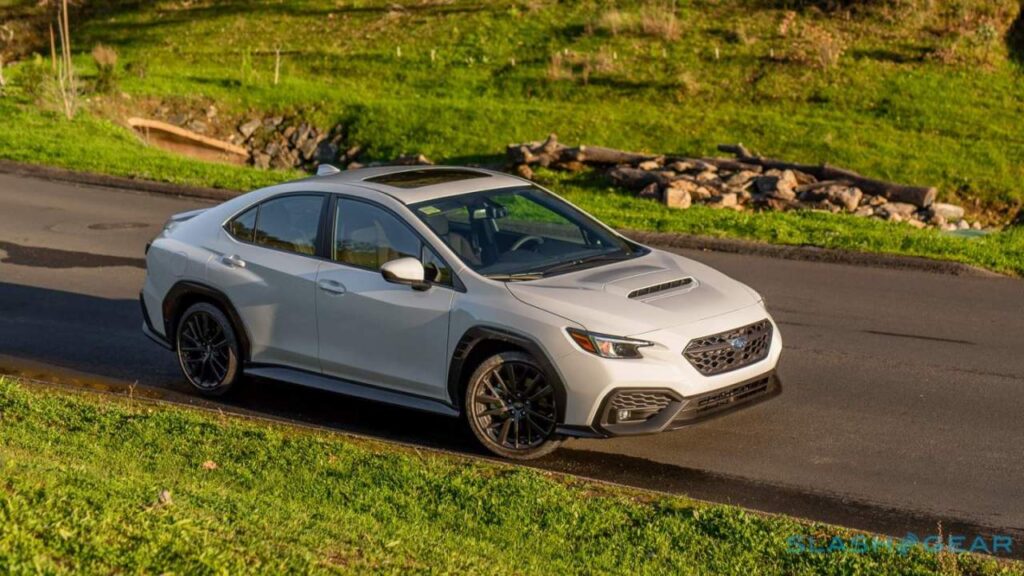
2022 Subaru WRX First Drive: Heritage just isn’t enough
As the affordable sports car market enjoys a revival of its glory days, with revived classics (Integra, anyone?) and entirely new sport-line nameplates in the $30,000-ish price range popping up seemingly weekly, it’s made it all that more challenging for manufacturers that have never given up on everyman performance to distinguish their offerings in this newly-crowded market. And so Subaru’s all-new 2022 WRX, now entering its twentieth year of American production, has a tougher job to do than virtually any of its legendary predecessors. Not only does it need to make a compelling case for itself against the new kids on the block, it has to appeal to those wistfully recalling the glory days of McRae blasting a Group A monster through Scottish forests.
Subaru’s consistency with the WRX formula continues into this fifth-generation car, but with a few twists. The basic ingredients of the 2022 model will be very familiar to long-time WRX aficionados: a turbocharged boxer-four is nestled into the engine bay and it, as always, powers all four wheels in a 50:50 torque split (although the automatic transmission shifts a bit more power rearward, with a 45:55 torque split, front/rear). Look deeper, and there are more similarities: displacement is now bumped up 400ccs from the outgoing model, to 2.4L, but despite the engine size increase the power is virtually unchanged with 271 HP and 258 lb-ft of torque on tap.
Weight is also nearly identical, with the newest base model sedan only packing on three extra pounds over its older sibling, for a 3,297 lb curb weight. As with 2021’s WRX, a six-speed manual or Subaru’s Variable Torque Distribution CVT automatic direct power from the flat-four to all four corners. Pricing is still unannounced, but I would expect it to be similar to the outgoing model too, likely coming in at just a tad under $30,000 after destination fees for the base trim.
On the spec sheet, then, it sounds quite a bit like its older, retiring sibling. Laying eyes on it, however, makes it clear it’s a bolder step than the statistics might imply.
For the first time in the WRX’s two-decade-long lifespan, it no longer shares a single panel with the Impreza it was born from. Every crease in the sheet metal is solely etched for the sporty turbo sedan and, personally, I appreciate the freedom the designers felt with the newest car. It continues the grown-up sports-car feeling of the outgoing generation, without falling into either bland commuter territory (in the vein of the last generation) or adding too many boy-racer try-hard accoutrements (yes, I’m looking at you, Bugeye, as beloved as you are).
The wider flares leading into the understated, intricately textured taillights help give it 90s-era rally-box-flare character lines without looking comedically angry. The complete visual package works well together, especially in lighter colors that showcase the angular cladding more cleanly.
The interior is significantly revised over the fourth generation’s as well, with the traditional double-screen center console of Subaru’s older cars replaced with a single, portrait-oriented 11.6” touchscreen embedded in the dash in trims above the base. Sadly, the lowest trim gets two vastly smaller touchscreens, clunkily slapped into the same dash design; the base model feels vastly cheaper inside as a result of losing the larger screen the console is clearly meant for. No matter which trim buyers opt for, however, Apple CarPlay and Android Auto are standard.
In higher trims with the larger, vertical screen, it’s acceptably responsive and easy to use without feeling like the massive size is too distracting in motion. Subaru also offers the ability to use the large portrait display as a split screen, so that multiple features – navigation and radio, for example – can be seen simultaneously. Despite the centerpiece presentation of the massive screen, the WRX UI designers also made the smart decision to not hide key features deep in menus. The HVAC controls and basic radio functions still get physical knobs and switches.





